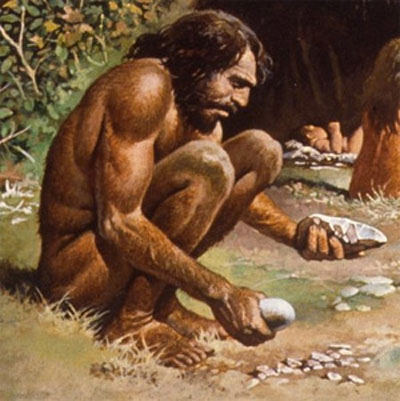Just another little piece in the jigsaw puzzle of human evolution emerged this week when researchers at the Max Planck Institute for Evolutionary Anthropology in Leipzig, Germany, announced the results of their sequencing of the entire genome from DNA recovered from the 45,000 year-old Homo sapiens male thigh bone, found in 2008 in an exposed banks of the Irtysh River at Ust-Ishim in western Siberia. It had been found by an ivory carver looking for mammoth tusks.
And, as with so often with science, a little piece of information has raised more questions and suggests that some of our earlier assumptions might just have been wrong.
Svante Pääbo's team have a lot more work to do but already a couple of things have been found:
- The DNA contained unmistakable traces of Neanderthal DNA showing that the man was descended from people who had interbred with H. neanderthalensis.
- Interbreeding had been quite recent judging by the fact that the sequences of Neanderthal DNA occurred in longer chunks than normally found in modern humans. As time progresses the chance of any chunk of DNA being chopped in half by crossover during the first stage of meiosis increases. A bit like whole fruit in a smoothy maker.
Genetically we now have a modern human that just barely postdates the Neandertal introgression into modern humans.
Now, and this might be a small crumb of comfort for those creationists who haven't simply ignored all this evidence of the hybrid origins of modern humans and must be feeling pretty depressed by all the evidence piling up against them, this has produced one of those small areas of disagreement amongst paleoanthropologists. Creationists normally enjoy these small disagreements and wave them around as evidence that, whilst science claims to be the only way to determine truth, it normally involves disagreement and changes of mind.Bence Viola. Max Planck Institute for Evolutionary Anthropology
It's like having a time machine, to go back 45,000 years to see how the genomes of modern humans differed both from our own and also from Neanderthals and Denisovans.
It had been assumed that H. neanderthalensis had evolved in Europe or Asia, probably from H. heidelbergensis or maybe H. habilis or even H. ergaster or H. antecessor and had adapted to the colder northern climate. Later, when H. sapiens came out of Africa they did not move up into the colder north initially but skirted the southern margins into southern Europe and across Asia. The most likely place for the interbreeding with H. neanderthalensis in this scenario would have been the Middle East somewhere around northern Arabia, Asian Minor, Iraq or Iran. And this more or less tied in with the estimated dates of our expansion out of Africa and the period of cohabitation with Neanderthals.Sarah Tishkoff, University of Pennsylvania, USA
However, this find suggests that modern humans adapted quite quickly to colder climates and were interbreeding with Neanderthals much further north. But, there is still much to be done to determine if this rapid adaptation was actually the result of the DNA we got from Neanderthals, or even to survival techniques and cold climate technologies we got from them.
One other intriguing possibility here is that, given the close proximity between Ust-Ishim and the Denisovan cave where a finger bone which yielded the DNA of a third species of humans was found, there may have been three different human species all capable of interbreeding and living in a relatively small area. All extra-African modern humans have some Neanderthal DNA and several groups of Southeast Asian and Austronesian people also have some Denisovan DNA, so it could be that this area was the point where all three came into contact and behaved very much like a ring species - just as we should expect gradually diverging species spread across a large geographical range to behave.
Researchers still think the Middle East is a likely place for the encounters. Other fossils in Israel, such as a 49,000-year-old Neandertal at Tabun Cave, might belong to people who were alive at the time of the unions or just after, says archaeologist Ofer Bar-Yosef of Harvard University, who was not a member of the team.
Ann Gibbons, Oldest Homo sapiens Genome Pinpoints Neandertal Input,
Science 28 March 2014: Vol. 343 no. 6178 p. 1417 DOI: 10.1126/science.343.6178.1417
Creationists who may be tempted to latch on to this little disagreement should bear in mind that there is no disagreement about human evolution here, or even the now established fact the modern humans coexisted with, and interbred with, related species of humans. The disagreement is simply over where the interbreeding took place.
'via Blog this'












